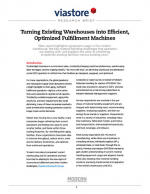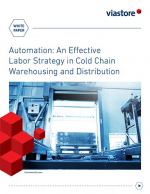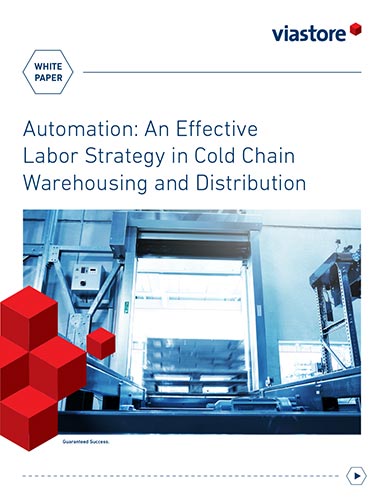Automation: An Effective Labor Strategy in Cold Chain Warehousing and Distribution
While many workers fear their jobs will be lost to automation, the reality is that automated solutions enable operations to increase productivity without increasing their headcount.
The Cold Chain Labor Challenge
It’s not news that labor is a top challenge for all warehousing and distribution operations. Indeed, the most recent MHI Annual Industry Report — which surveys 1,000 supply chain leaders every year — has again found that the top challenge among respondents remains hiring and retaining qualified workers.
Add the unique environmental challenges of a temperature-controlled, cold or frozen storage facility, to associates’ general dislike of working in the cold, and it can be even more difficult to find and keep employees in those operations.
Also contributing to the workforce challenge: the unemployment rate has been steadily falling since the end of the last recession. Prior to the emergence of the global COVID-19 pandemic, U.S. unemployment had fallen to 3.6%.
Labor was scarce, and the prognosis for finding additional workers was grim due to a variety of reasons, including:
- Network optimization strategies that positioned warehouses and distribution centers in key geographic regions. While this supported more accessible and affordable transportation and delivery to population centers, it also resulted in multiple facilities located in close proximity to each other. This increased demand for a finite number of available warehouse workers.
- Baby Boomers continue to retire, with 75 million of them leaving the workplace and taking their skillsets with them. Following behind them are 53 million Generation X workers and 56 million Millennials who lack the skills and interest in working in warehousing and distribution.
- The image of warehousing and distribution jobs remains unappealing to younger generations considering careers.
Post-pandemic, economists and analysts hold varying opinions about the length of time it will take for both the economy and employment levels to stabilize and return to pre-pandemic levels.
While there was a significant jump in unemployment due to COVID-19, most of those who lost jobs were employed in the travel, hospitality, tourism, and food service industries.
Those persons might take jobs in supply chain as a means to pay their bills short-term, but many of them are likely to return to their (preferred) previous fields as the post-COVID world adjusts to the “new normal.”
Likewise, more organizations have sought to safeguard against future supply chain disruptions like those experienced in 2020 due to global shutdowns and overtaxed shipping lanes. Their new approach is to re-shore some (or all) of their manufacturing and supply sources.
Bolstering this trend are ongoing trade and tariff disagreements between the U.S. and countries seeking to stabilize their own economies, which further makes re-shoring that much more appealing. However, this too will increase demand for labor in the U.S. over the next 24-36 months.
What’s Related




Favorites





